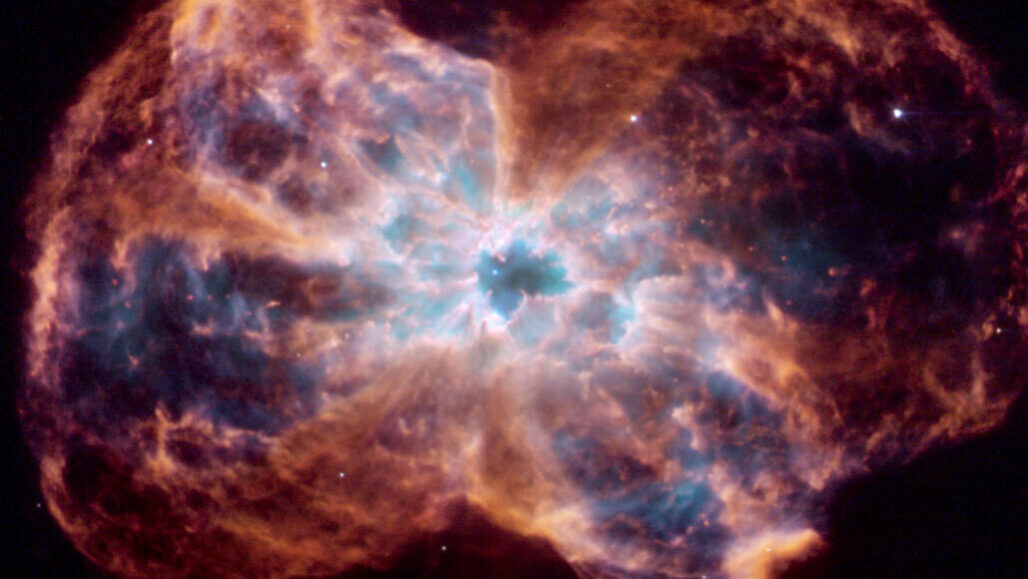Strange but true: White dwarfs shrink as they gain mass
Telescopes have just confirmed what had been predicted for these hot cores of dead stars

White dwarfs, like the one inside NGC 2440, the planetary nebula pictured here, have a strange property. The more mass these super-dense stars gain, the smaller they get.
K. Noll/STScI, ESA, NASA
White dwarfs are the superhot stripped-down cores of dead stars. Scientists had predicted that these stars should do something really weird. Now, telescope observations show this really does happen: White dwarfs shrink as they gain mass.
As far back as the 1930s, physicists had predicted the star corpses would act this way. The reason, they said, was due to an exotic material in these stars. They call it degenerate electron gas.
To keep from collapsing under its own weight, a white dwarf must create a strong outward pressure. To do this as a white dwarf packs on more mass, it must squeeze its electrons together ever more tightly. Astronomers had observed evidence of this size trend in a small number of white dwarfs. But data on thousands more of them now show that the rule holds up across a sweeping range of white dwarf masses.
Vedant Chandra and his colleagues at Johns Hopkins University in Baltimore, Md., shared their finding online July 28 at arXiv.org.
Understanding how white dwarfs shrink as they gain mass could improve scientists’ understanding of how stars explode as type 1a supernovas, says astronomer and coauthor Hsiang-Chih Hwang. These supernovas are thought to develop when a white dwarf gets so massive and compact that it explodes. But no one is sure precisely what drives that stellar pyrotechnic event.
Heigh ho, heigh ho — observing white dwarfs
The team examined the sizes and masses of more than 3,000 white dwarf stars. They used the Apache Point Observatory in New Mexico and the European Space Agency’s Gaia space observatory.
“If you know how far away a star is, and if you can measure how bright the star is, then you can get a pretty good estimate of its radius,” says Chandra. He’s a college student studying physics and astronomy. Measuring a white dwarf’s mass has proven tricky, however. Why? Astronomers usually need to see a white dwarf gravitationally tugging on a second star to get a good idea of the white dwarf’s heft. Yet many white dwarfs lead a solo existence.
For these loners, the researchers had to focus on the color of the starlight. One effect of general relativity is that it can shift the apparent color of starlight to the red. It’s known as a gravitational redshift. As light escapes a strong gravitational field, like the one around a dense white dwarf, the length of its waves stretch. The denser and more massive the white dwarf, the longer — and redder — its light becomes. So the greater a white dwarf’s mass is compared to its radius, the more extreme this stretching. This trait allowed scientists to estimate the mass of solo white dwarfs.
And that mass closely matches what had been predicted for smaller sizes of heftier stars. White dwarfs with about half of the sun’s mass were about 1.75 times as wide as Earth. Those with slightly more mass than the sun came in closer to three-quarters the width of Earth. Alejandra Romero is an astrophysicist. She works at the Federal University of Rio Grande do Sul. It’s in Porto Alegre, Brazil. She says it’s reassuring to see white dwarfs following the expected trend of downsizing as they pack on more mass. Studying even more white dwarfs could help confirm the finer points of this weight-waistline relationship, she adds. For instance, theory predicts the hotter white dwarf stars are, the more puffed up they will be when compared to cooler stars of the same mass.







